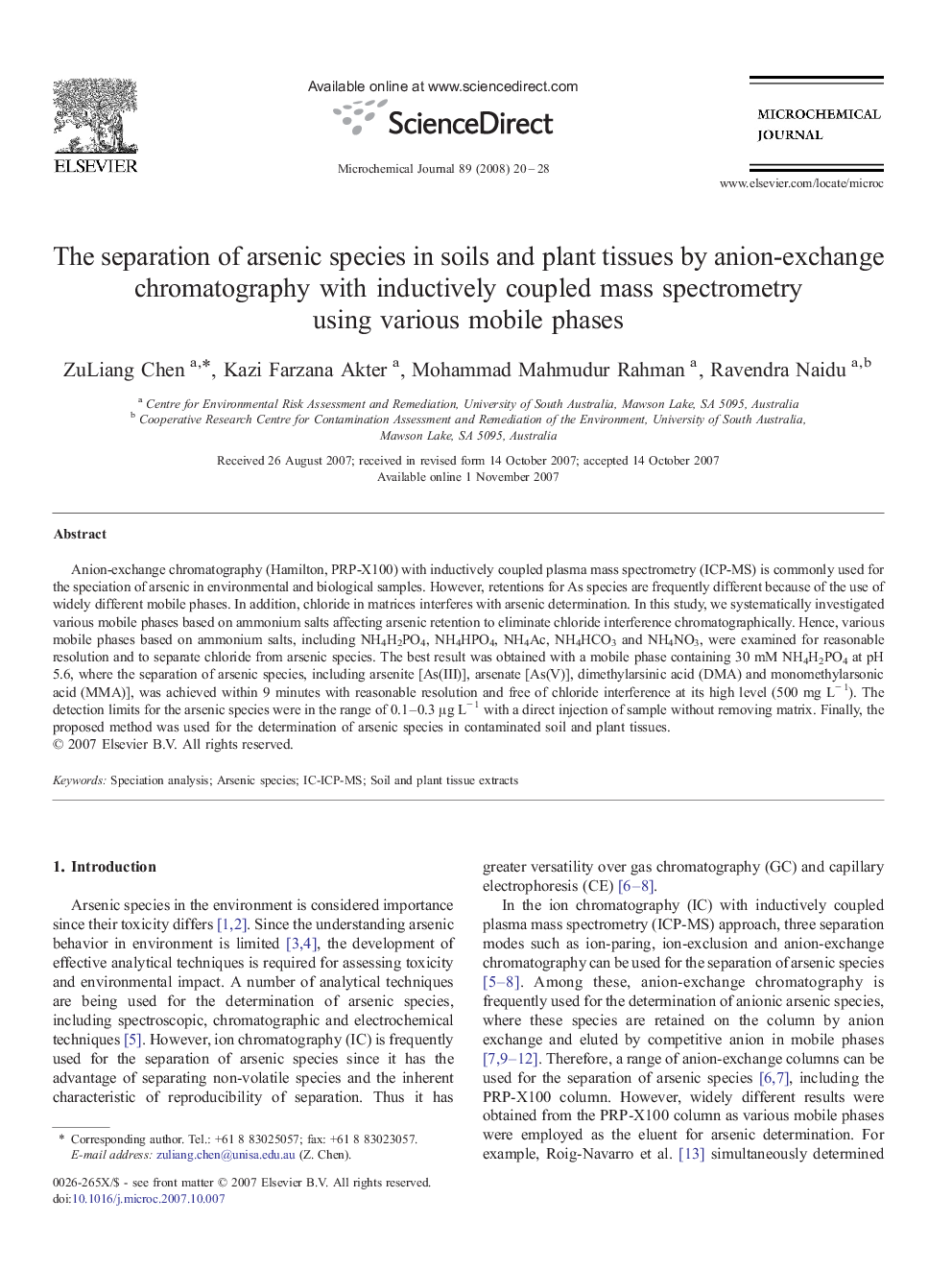| Article ID | Journal | Published Year | Pages | File Type |
|---|---|---|---|---|
| 1228590 | Microchemical Journal | 2008 | 9 Pages |
Anion-exchange chromatography (Hamilton, PRP-X100) with inductively coupled plasma mass spectrometry (ICP-MS) is commonly used for the speciation of arsenic in environmental and biological samples. However, retentions for As species are frequently different because of the use of widely different mobile phases. In addition, chloride in matrices interferes with arsenic determination. In this study, we systematically investigated various mobile phases based on ammonium salts affecting arsenic retention to eliminate chloride interference chromatographically. Hence, various mobile phases based on ammonium salts, including NH4H2PO4, NH4HPO4, NH4Ac, NH4HCO3 and NH4NO3, were examined for reasonable resolution and to separate chloride from arsenic species. The best result was obtained with a mobile phase containing 30 mM NH4H2PO4 at pH 5.6, where the separation of arsenic species, including arsenite [As(III)], arsenate [As(V)], dimethylarsinic acid (DMA) and monomethylarsonic acid (MMA)], was achieved within 9 minutes with reasonable resolution and free of chloride interference at its high level (500 mg L− 1). The detection limits for the arsenic species were in the range of 0.1–0.3 μg L− 1 with a direct injection of sample without removing matrix. Finally, the proposed method was used for the determination of arsenic species in contaminated soil and plant tissues.
